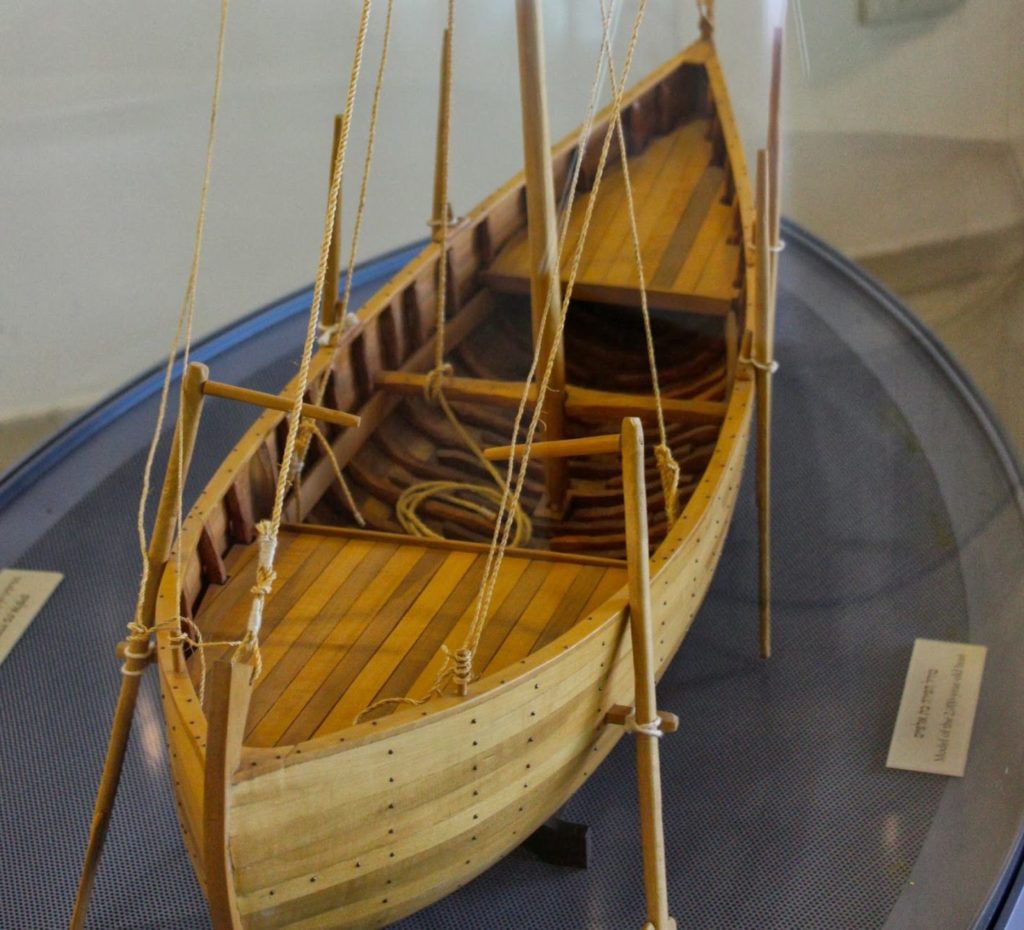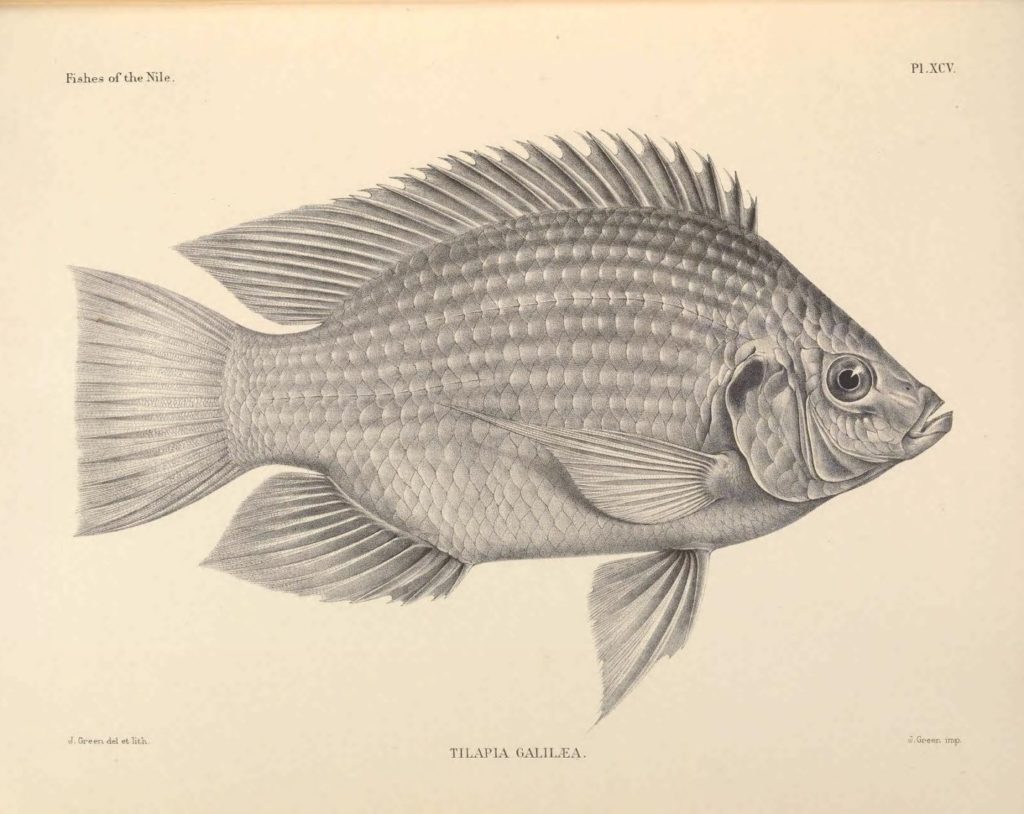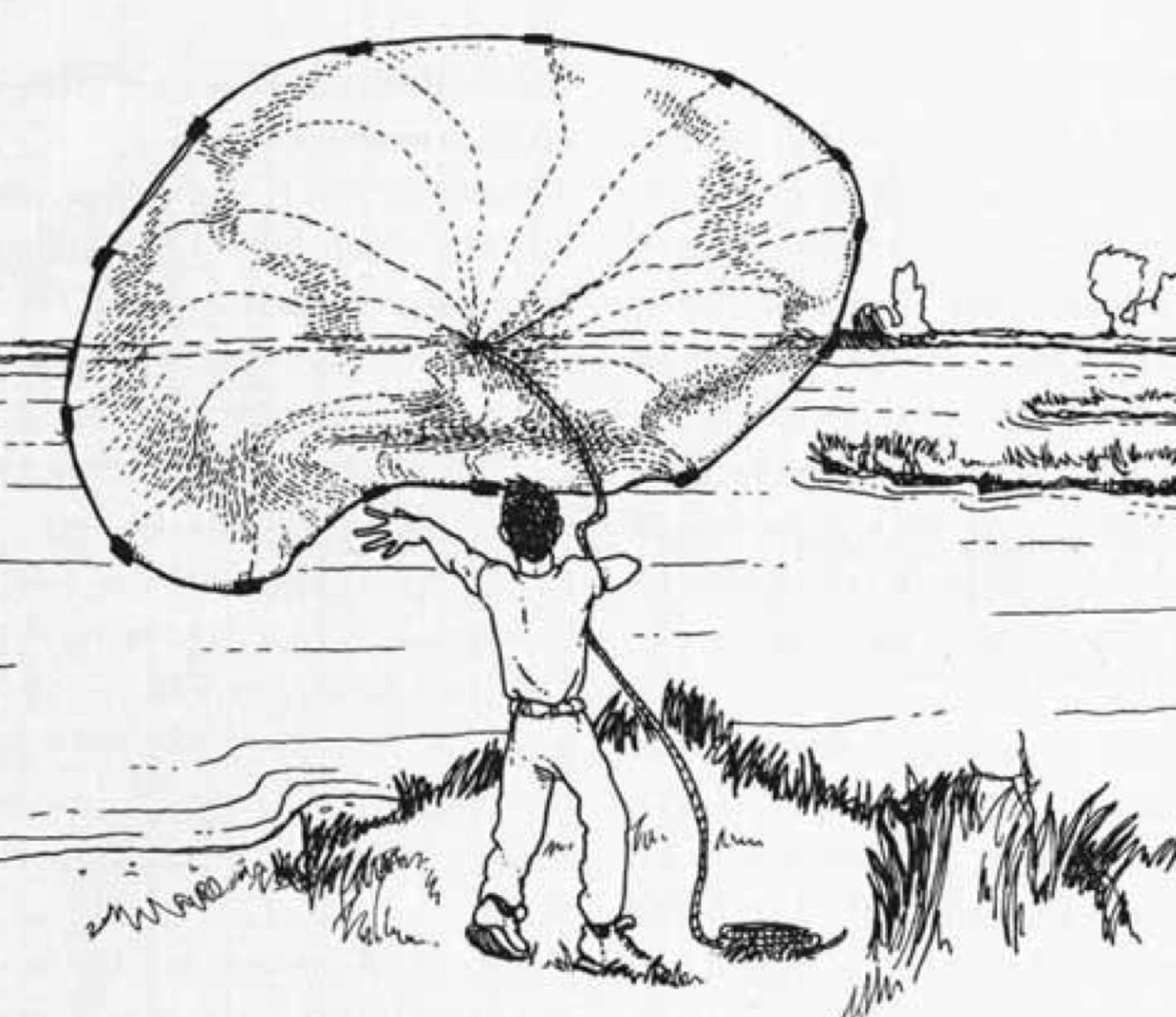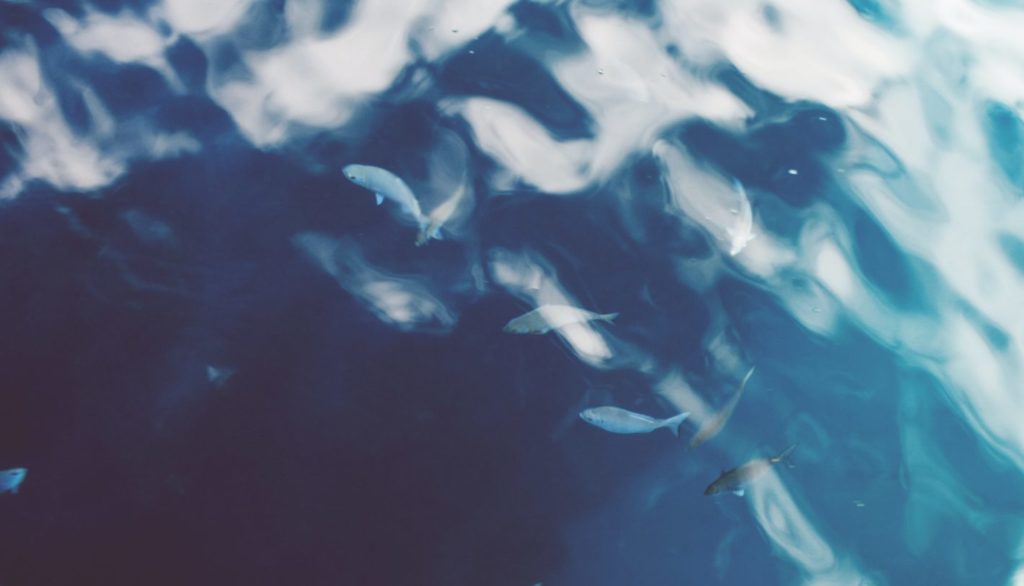The two miracles probably took place in present-day Tabgha. The boats they used may have been similar to the boat of the time discovered near Ginosar. It seems that the species of fish they caught on both occasions was the "St. Peter's fish", the tilapia. Sarotherodon galilaeus. The fishing gear perhaps used was the trammel net in the first fishing, and the tarraya in the second.
Finally, the dates can be well defined, at the beginning of Jesus' public life, in the winter of the year 27, and at the end, after his resurrection, in the early spring of the year 29 AD.
Introduction
We are used to reading interpretations of facts and sayings of Jesus in the Gospels. But, for a person who loves Jesus, it may not be enough. He needs to know more, like a person who loves his parents wants to see pictures of when they were young and to know all the details of their life. Many times we would like to know the environment where Jesus lived, his customs, and many details that the Gospels only outline or present as circumstances to explain what is of interest: to foster faith in Jesus Christ in their readers. Therefore, we will approach the Gospel scene from a different point of view than usual; it will be more scientific, that is, taking into account verifiable facts, both from the Gospel narrative as historical, as well as through data of the time, archaeological remains, geographical places or biological data.
The first miraculous catch
The only Evangelist who narrates the first miraculous catch of fish is St. Luke (5:1-11): "Now when the people were crowding around him to hear the word of God, as he stood by the lake of Gennesaret, he saw two boats standing on the shore; the fishermen, who had landed, were washing their nets. Going into one of the boats, which was Simon's, he asked him to draw it a little from the land. From the boat he sat down and taught the people.
When he had finished speaking, he said to Simon, "Put out into the deep, and let down your nets for a catch." Simon answered and said, "Master, we have been struggling all night and have gathered nothing; but at your word I will let down the nets."
And when they had set to work, they made such a great haul of fish that the nets began to burst. Then they beckoned to their companions, who were in the other boat, to come and lend them a hand. They came and filled both boats, so that they almost sank. When Simon Peter saw this, he fell at Jesus' feet, saying, "Lord, depart from me; for I am a sinful man.
And it was because amazement had seized him and those who were with him, because of the haul of fish which they had caught; and the same thing was happening to James and John, sons of Zebedee, who were Simon's companions. And Jesus said to Simon, "Do not be afraid; henceforth you shall be fishers of men." Then they drew their boats to land, and leaving everything, they followed him.".
Location
The scene takes place in the usual docking place of the boats of the two pairs of brothers: Peter and Andrew, James and John, the fishermen disciples of the Lord. Nun (1989) places it in Taghba. The scene occurs when they are cleaning the nets after an unsuccessful night of fishing, work for which the home port is always chosen, since it requires instruments and materials that are kept on the coast.
The greater abundance of fish in the northern part of Lake Galilee, where there are more harbors and villages than in the southern part of the lake, is well known (Figure 1).
Taghba locality is the closest to the most important area for fishing, especially in winter and spring, also currently. The main reason is that warm water streams flow there where food grows easily that attracts fish (Troche, 2015), especially tilapia and lake sardines (Masterman, 1908; Nun, 1989). This area of the lake has most likely not changed from a climatic, hydrological, geological and fishery point of view since Roman times, the one Jesus knew (Troche, 2005). When the Gospel uses the expression "paddle out to sea"The fact that the fishing at that time was carried out relatively close to the shore, at a maximum of several hundred meters from the coast (Troche, 2015). Some archaeological remains have been found in Taghba that may belong to the ancient port (Nun, 1989), although other authors doubt that these remains are so ancient since most probably the lake level was higher than the current one (Troche, 2015). Since this is a steep area, where a certain depth is quickly reached, the shore constructions were at a similar distance from the water to the present ones.

Another possibility for the miracle would be the port of Capernaum, where Peter's house is preserved (Gil and Gil, 2019), although that would imply having to sail a distance of about 3 kilometers more each day, both on the way there and on the way back, something that the fishermen avoid as much as possible. For these reasons, the Taghba option seems to us to be the most likely for the miracle to occur (Figure 1).
Boats
According to St. Luke's account, before the fishing, Jesus preached in St. Peter's boat and told him to cast the nets for the fish. He also relates the presence of a second boat, which helps to bring the fish to land, probably that of the brothers John and James, expressly mentioned by the evangelist.

The remains of the only surviving ancient vessel from Lake Galilee were found buried at the bottom of the lake, between Magdala and Ginosar, in December 1985, a year when the waters were very low due to lack of rain.
The vessel was in relatively good condition, perhaps protected by being mostly buried and submerged in fresh water, where the wood is better preserved than in the sea. The vessel was removed, and is now on display in the museum of Ginosar; it has been dated to the 1st century AD. It is 8 meters long, 2.3 meters beam and 1.3 meters depth (Wachsmann, 1988). The bow is tapered and the stern is rounded; both were probably covered. In the center it had an area that was used for rowing, fishing and transporting goods and people. It had a central mast for sailing, and also oars: four. The sail was probably of the square-rigged type (Lofendel and Frenkel, 2007; Troche, 2015; Wachsmann, 1988).
In an excavation at Magdala, a mosaic was found with a boat of the period that confirms the description made. Although it appears to have three oars on each side, the rear one was actually used as a rudder (Figure 2, Wachsmann, 1988).
This boat is operated by at least four oarsmen and a helmsman, although it can carry more people. The historian Flavius-Joseph describes that Jews used such boats in the first Jewish revolt against Rome (Wachsmann, 1988). In some cases, the capacity can reach 8-12 people, which corresponds to the largest boats that in ancient times fished on the lake, although boats of a smaller size, for 1 or 2 people, have also been described (Troche, 2015).
It seems to us that the characteristics of this boat coincide very well with the one that could have belonged to Peter. The gospel narrative uses the plural for the number of fishermen, in addition to Peter and Jesus himself, who was on board during the miracle. Therefore, we think that the boat corresponds to the largest of the boats on the lake, similar to the one previously described.
Of the second boat of the Gospel narrative, that of John and James, we also have some data in the Gospels. The Gospel of St. Mark, in narrating the vocation of John and James, says (Mk 1:19-20): "A little farther on he saw James of Zebedee and his brother John, who were in the boat going over the nets. Then he called them, and they left their father Zebedee in the boat with the hired servants and went after him.".
There would, therefore, be five persons in the boat's crew: Zebedee and his two sons, plus two or more servants. Therefore we deduce that the second boat of the story is of the same type as the one described for the miraculous fishing. From the remains found we can draw a fairly close model to what may have been the real one, which is in the museum at Ginosar. The boat has been well described by several authors (Wachsmann, 1988; Lofendel and Frenkel, 2007; Fig. 3).

Fishing gear
The fishing gears that we consider as possible are the three types of nets that were then used in the lake (Troche, 2015; Nun, 1989; Masterman, 1908): the tarraya, the trammel net and the sweep net.
– Supernatural tarraya (Figure 6) is a round net, with weights at the ends and a line in the center with which it is cast. There are several types of tarraya, depending on the size of the fish to be caught, in which the mesh size and the diameter of the net vary. In the lake there were at least three types: for sardines, for tilapia or for barbel (Mastermann, 1908). Its mode of use is to throw it over the school of fish, from a boat or from the shore, where they are caught by the net when their ends fall to the bottom when dragged by the weights.
The trammel (Figure 4) is a rectangular triple net, with buoys at the top and weights at the bottom. It consists of three meshes, the central one with a smaller mesh size than the lateral ones, trapping the fish when it meets the central net. Two boats can be used for fishing. The first one stealthily sets the trammel net parallel to the coast. Once the operation is finished, the second boat scares the fish with noises and movements, which flee hastily towards greater depth, being caught by the trammel net. This operation can be done many times (up to twelve) in one night (Nun, 1989). Skilled fishermen, like the disciples of Jesus, could set a trammel net in a few minutes. This type of net has been used throughout the Mediterranean since time immemorial, and there are indications that it was also used in the lake at that time (Cottica D. and Divari L., 2007; Troche, 2015).

– Supernatural sweep net (figure 5) is a unique u-shaped net, with buoys at the top and weights at the bottom, and long lines at the ends that allow several people to pull it from the shore. It is a long net that allows the following operation: a boat departs from the shore, where it has left a group of men with a line connected to one end of the net. From the boat, the net is released, first perpendicular to the shore, then parallel to the shore and finally back to the shore, leaving the net fully deployed. When it is reached, the men in the boat go ashore and begin to pull at the same time on both sides of the net until they pull it ashore, concluding the fishing once the captured fish are pulled ashore.
According to the gospel account, we can rule out the sweep net for the miracle, since a minimum of 10-12 people were needed to set it. The trawl is a singular net, so the use of the plural of the text would lead us to rule it out as possible.

Among the three arts, Nun (1989) thinks that in this miracle a trammel net is used. Gospel's explanation may support this hypothesis, since it presents the two boats of the two pairs of brothers after an unsuccessful night of fishing, when they are cleaning the gillnets on the boat, as it is usually done when it is fishing season (in times of less fishing the cleaning is done in the port or on the shore: Nun, 1989).
As Luke uses the word "networks"The name "trammel net" may refer to the trammel net, which, being made up of several parts, is named in the plural. The catch is so great that they have to ask for help from the other boat so that theirs does not sink under the weight of the fish caught and the wet net. In addition, the presence of a second boat coincides with the trammel net fishing system, which remains to this day in shallow coastal areas. For all these reasons, we agree with Nun that they probably used a trammel net to make the miraculous catch.
Species of fish caught
The only species native to Lake Galilee and of large size that can be caught in such quantities in a single fishing haul is the St. Peter's fish, Sarotherodon galilaeus (Figure 5), along with the other less abundant species of tilapia from the lake, known in the local language as musht.
This species has an annual cycle, with two distinct seasons, one dedicated to feeding and the other to reproduction. During the first, they gather in shoals in the winter months and early spring in the area near Taghba, for feeding reasons (Mastermann, 1908 and Nun, 1989). During the breeding season, breeding pairs disperse throughout the lake. Reproduction takes place by external fertilization of the eggs in a hole made in a rocky area and defended by the parents. As soon as the fry hatch, one of the parents takes care of them, using its mouth as a shelter, and the pair is discarded (Fishbase.us). At the moment of independence, the parent expels the juveniles from the mouth by rubbing stones in it (Nun, 1989).
Nun, a professional fisherman on the lake, comments amusingly that the story as told in the Gospel is a true fisherman's story, because it is a bit exaggerated, as was common on Lake Galilee even in the last century, when there was no overfishing of St. Peter's fish and large catches were made with a single set of trammel nets.

Date of the miracle
The miracle could have occurred in the first winter of Jesus' public life, since just after he calls the four fishermen brothers to follow him as disciples. That is to say, it would probably be the winter of the year 27 of our era.
The second miraculous catch
The second miraculous catch of fish is narrated only by St. John (21:1-14): "After this Jesus appeared again to the disciples by the lake of Tiberias. And he appeared in this manner: Now there were together Simon Peter, and Thomas, called the Twin, and Nathanael of Cana of Galilee, and the Zebedee's, and two other of his disciples.
Simon Peter said to them, "I am going fishing". And they said to him, "We also will go with you. So they went out and embarked; and that night they caught nothing.
It was already dawning, when Jesus appeared on the shore; but the disciples did not know that it was Jesus.
Jesus says to them, "Boys, have you any fish?" They answered, "No."
He said to them, "Cast the net on the right side of the boat, and you will find. They cast it, and they could not draw it, because of the multitude of fish.
And the disciple whom Jesus loved said to Peter, "It is the Lord. When Simon Peter, who was naked, heard that it was the Lord, he tied his tunic and threw himself into the water.
The other disciples approached in the boat, for they were only about two hundred cubits from land, towing the net with the fish.
When they jumped to the ground, they saw some coals with fish on them and bread. Jesus said to them, "Bring the fish you have just caught. Simon Peter got into the boat and dragged to shore the net full of large fish: one hundred and fifty-three. And though there were so many, the net was not torn.
Jesus said to them, "Come, eat your lunch". None of the disciples dared to ask him who he was, for they knew well that he was the Lord.
Jesus comes and takes the bread and gives it to him, and the fish.
This was the third time Jesus appeared to the disciples after rising from the dead."
Location, vessel and species
The miracle happens again in the usual port of Pedro's boat, Taghba. An important difference is that in the previous miraculous catch Jesus is in the boat, and in the second one he is on the shore. The boat is again Peter's boat. From land, Jesus could see a school of tilapia, Sarotherodon galilaeus, as is often the case in that area in winter and early spring, indicating where to cast the net.

Fishing gear
The story narrates an almost immediate temporal relationship between Jesus' command and the miraculous catch of fish. To catch a school of fish in areas close to the shore, the tarraya can be used, either from land or from the boat (Figure 6). As mentioned above, there are specific trawls for tilapia fishing. The gear was cast with great skill by Pedro, and 153 large fish were caught. Normally, a tarraya does not catch that many fish, as they are too many for a net cast with one hand. This fits with the indication that part of the miracle is that the net did not break. We would have to rule out the trammel net, as the school of fish would have easily escaped while setting, or the sweep net, as it would have required at least two boats and many more fishermen.
Date of the miracle
It takes place after the resurrection of Jesus, probably in the spring of the year 29.
TO CONTINUE READING
Cottica D. and Divari L., Spheroid clay weights from the Venetian Lagoon, in: Ancient nets and fishing gear, T. Bekker-Nielsen and D. Bernal., University of Cadiz, Aarhus 2007, pp. 347-363.
http://www.fishbase.us/summary/SpeciesSummary.php?ID=1389&genusname=Sarotherodon&speciesname=galilaeus&AT=Sarotherodon+galilaeus&lang=English (accessed 27-VI-2020)
Lofendel, L.-Frenkel, R., The boat and the Sea of Galilee, Jerusalem-New York 2007.
Masterman, E. W. G., "The Fisheries of Galilee," in: Palestine Exploration Fund Quarterly Statement 40, n. 1 (January 1908), pp. 40-51.
Nun, M., The sea of Galilee and its fishermen in the New Testament, Ein Gev 1989.
Troche, F.D., Il sistema della pesca nel lago di Galilea al tempo di Gesù. Indagine sulla base dei papiri documentari e dei dati archeologici e letterari, Bologna 2015.
Wachsmann, S., "The Galilee Boat-2,000-Year-Old Hull Recovered Intact" in: Biblical Archaeology Review, 14(5), 18-33.
Priest and Doctor in Theology and Marine Sciences.








